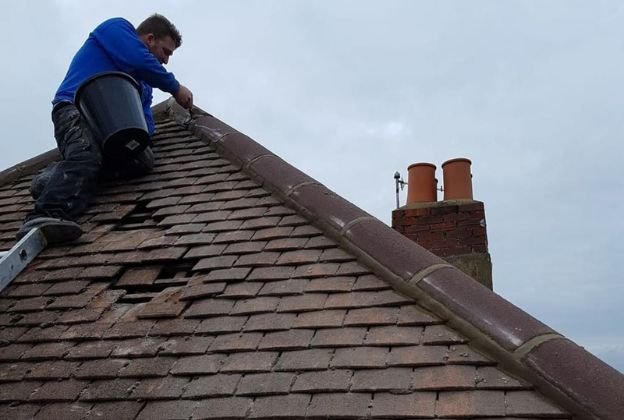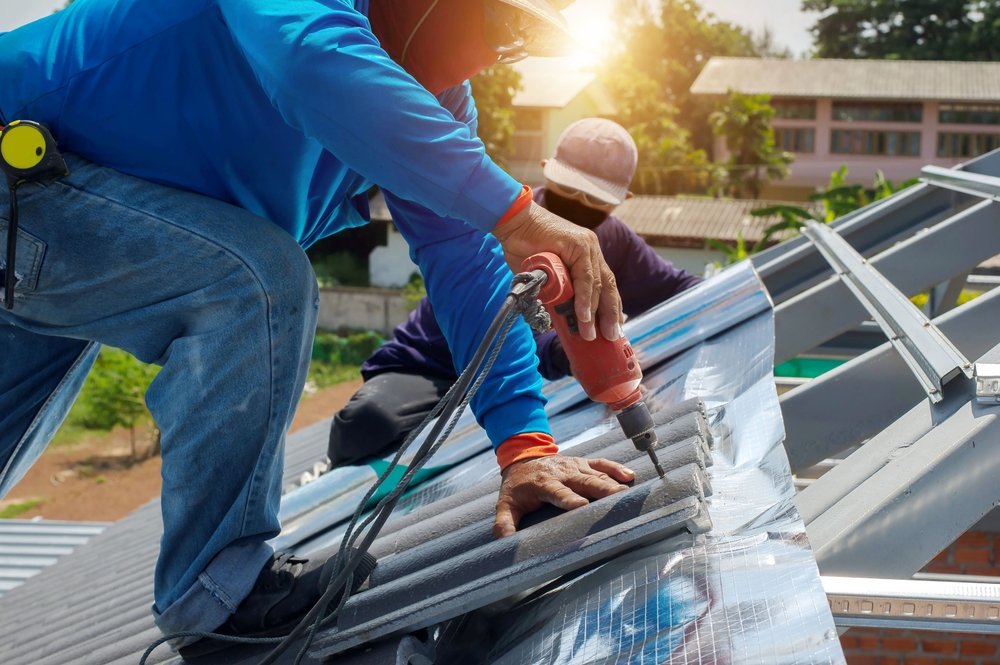Roofing Companies Oahu: Trusted Professionals for Your Roofing Requirements
Roofing Companies Oahu: Trusted Professionals for Your Roofing Requirements
Blog Article
Comprehending the Different Types of Roofings: A Comprehensive Guide for Homeowners
With a variety of options-- varying from the conventional gable to the modern level-- each type presents one-of-a-kind benefits and difficulties that need to line up with the homeowner's environmental considerations and specific demands. As we explore the complexities of different roofing types, it comes to be noticeable that one dimension does not fit all; the appropriate selection might amaze you.
Saddleback Roof
Gable roofs, characterized by their triangular form, are amongst one of the most prominent roof covering styles as a result of their simplicity and performance in shedding water and snow. This design features 2 sloping sides that fulfill at a ridge, enabling reliable drain and lessening the threat of water buildup. The steep pitch frequently connected with saddleback roofs boosts their capacity to handle hefty rainfall, making them suitable for various climates.
In enhancement to their sensible advantages, saddleback roofs offer visual flexibility. They can be adapted to various building styles, from typical to modern-day homes. The layout can likewise fit additional features such as dormer windows, which improve natural light and ventilation in the attic area.
In addition, gable roof coverings give adequate space for insulation, adding to energy effectiveness. Home owners can select from a variety of roofing products, consisting of asphalt shingles, metal, and floor tiles, better boosting customization options.
In spite of their benefits, gable roof coverings may need additional support in locations prone to high winds or heavy snowfall. Generally, the gable roof covering remains a favored option as a result of its blend of performance, sturdiness, and aesthetic charm.
Apartment Roofs
Flat roofs are often acknowledged for their minimalist layout and sensible applications, particularly in industrial and commercial settings (oahu roofing). These roofings include a nearly straight or horizontal surface area, which enables simple building and construction and versatile space application. While they may lack the aesthetic appeal of angled roofs, level roof coverings provide various benefits, particularly in urban environments where making the most of area is important
One of the main advantages of level roofing systems is their availability. Property owners can make use of the roof room for different objectives, such as roof yards, balconies, or photovoltaic panel installations. In addition, level roofing systems are usually much more affordable to install and preserve contrasted to their sloped counterparts, as they need fewer products and labor.
Common products utilized for level roof coverings include built-up roof covering (BUR), modified asphalt, and single-ply membrane layers, each offering distinct benefits. On the whole, flat roof coverings offer as a useful and versatile choice for lots of homeowners and businesses alike.
Hip Roofing Systems
Hip roof coverings are defined by their sloped sides that merge at the top, creating a ridge. This design stands out from gable roof coverings, as all 4 sides of a hip roofing incline downwards towards the walls, supplying a much more stable structure. The angle of the slopes can vary, permitting versatility in building looks and performance.
One of the primary benefits of hip roofings is their capability to endure hefty winds and damaging weather. The sloped surface areas make it possible for much better water drainage, lowering the danger of leaks and water damages. Additionally, hip roofs supply boosted attic space, which can be made use of for storage and even converted right into livable locations.
Nevertheless, constructing a view it hip roof covering can be much more complex and expensive than less complex roofing types, such as saddleback roofs. The additional product and labor involved in developing the slopes and making sure correct architectural honesty can lead to greater expenditures. In spite of these downsides, numerous homeowners favor hip roof coverings for their toughness, aesthetic charm, and possibility for energy effectiveness.
Mansard Roof Coverings
Mansard roofing systems, usually recognized by their special four-sided layout, feature two inclines on each side, with the reduced slope being steeper than the upper. This architectural design, stemming from France in the 17th century, is not just aesthetically enticing but useful, as it makes the most of the useful space in the upper floors of a structure. The high reduced incline permits even more clearance, making it an ideal choice for attics or loft spaces, which can be exchanged living rooms.
Mansard roofs are defined by their adaptability, suiting numerous building designs, from typical to modern-day. They can be created with various materials, including asphalt shingles, slate, or metal, offering house owners with a variety of choices to fit their choices and budget plans. Furthermore, the style permits the combination of dormer windows, enhancing all-natural light visit homepage and air flow in the top levels.
Nevertheless, it is important to consider the potential disadvantages. Mansard roofings may require more maintenance as a result of the intricacy of their style, and their steep slopes can be testing for snow and rainfall overflow. In general, mansard roofings integrate beauty with practicality, making them a preferred option among homeowners looking for unique architectural features.
Lost Roofing Systems
As homeowners increasingly look for simplicity and capability in their architectural designs, dropped roofing systems have actually become a popular selection. Defined by a solitary sloping airplane, a shed roof offers a minimalist visual that matches numerous home styles, from modern to rustic.
One of the key advantages of a shed roofing is its straightforward building, which often equates to decrease labor and material costs. This style permits for efficient water drainage, lowering the risk of leaks and water damages. In addition, the upright slope offers adequate room for skylights, enhancing natural light within the inside.
Lost roofs likewise use convenience in terms of usage. They can be efficiently integrated right into enhancements, garages, or exterior frameworks like pavilions and sheds. Additionally, this roofing design can suit different roof covering products, including steel, asphalt tiles, or even environment-friendly roofs, lining up with green initiatives.
Nonetheless, it is important to take into consideration regional climate conditions, as hefty snow tons might require changes to the roof covering's angle or structure. In check out this site general, dropped roofings provide a useful and aesthetically pleasing choice for home owners looking to take full advantage of performance without jeopardizing style.
Final Thought


Gable roofs, defined by their triangular shape, are among the most prominent roof covering styles due to their simplicity and effectiveness in losing water and snow. oahu roofing. The steep pitch frequently linked with gable roofs boosts their capability to manage hefty rainfall, making them suitable for different climates
While they might do not have the visual charm of pitched roofings, level roof coverings offer countless advantages, particularly in metropolitan atmospheres where taking full advantage of space is vital.

Report this page